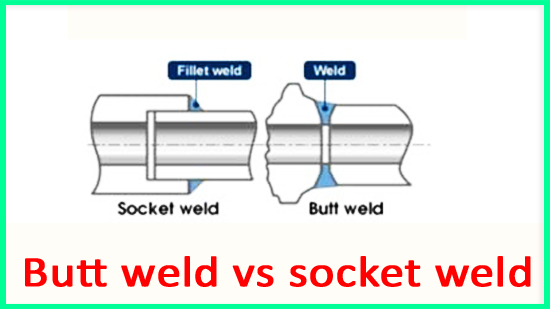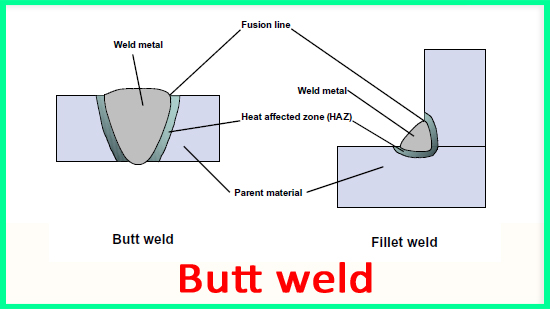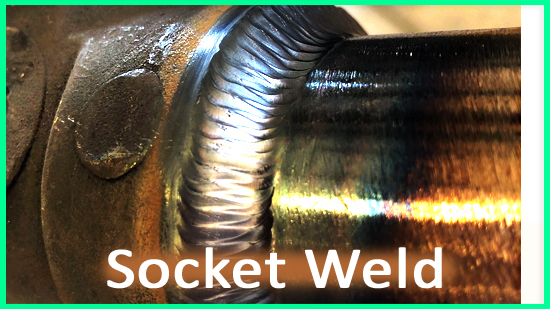Butt weld vs socket weld
Butt weld and socket weld are two types of welding that are commonly used in the piping and construction industries. Both methods involve joining two pieces of metal together, but they differ in terms of the way the pieces are joined and the equipment used.
Understanding the difference between the two types of welding is important for determining the most appropriate method for a given project.
In this article, we will explain what butt weld and socket weld are, compare the two types of welding, and discuss the factors to consider when choosing between the two methods.
Welding is a process that involves joining two metals to form a single piece. Butt weld and socket weld are two popular welding techniques used in this process. The choice of which technique to use depends on various factors, such as the size of the pipe, the strength required, and cost effectiveness.
We will compare butt weld and socket weld to understand their differences and advantages so that you can make an informed decision when it comes to selecting the right welding technique for your project. We will look at the definition and explanation of each method, as well as their respective advantages, strengths and weaknesses.
Through our comparison we will provide you with a better understanding of both welding techniques so that you can decide which one is best suited for your needs.
Butt weld and socket weld are two of the most common methods used to join pipes, fittings and other components in fabrication. Butt welds are achieved by heating two pieces of metal until they fuse together, while socket welds involve inserting a pipe or fitting into an appropriately sized pre-drilled hole and welding along the joint line. Both methods require expertise and skill to be correctly completed, but each has its own unique advantages depending on the application.
Butt welds are often used for larger diameter pipes because they can provide a strong, permanent joint without any additional supports. The process is relatively straightforward; two pieces of material are prepared, heated using a torch or welding machine until the material is softened, then pressed together with a hammer or clamp. This creates an intimate connection between the two pieces that ensures maximum strength and reliability.
Socket welds are usually used on smaller diameter pipes or where space limitations make butt welding impractical. The process involves inserting one component into a pre-drilled hole in another component and then welding around the circumference of the joint line.
Socket welds offer good structural integrity compared to other joining techniques such as soldering or brazing, but take more time to complete since several passes must be made with the welding machine before a secure connection can be established.
Additionally, it is important to ensure that all components fit perfectly before attempting to socket weld them together - even minor discrepancies can cause serious problems down the line if not addressed at this stage.
Butt Weld
Then a filler material is added to the joint and allowed to cool. The resulting connection is generally stronger than the parent materials, making it ideal for many industrial applications.
The thickness of the base materials affects how much heat needs to be applied for successful joining. It is also important to ensure that there is a proper fit-up between each piece so that uniform penetration can occur along the entire length of weldment. In addition, any dirt or corrosion on either surface should be carefully removed with abrasive paper before welding begins.
A common technique used when butt welding is known as tacking.
This involves preheating small areas along the joint at a time before applying the final fill pass with filler material in order to minimize distortion caused by heat conduction across the joint.
Once complete, additional measures may need to be taken in order to reduce residual stresses created during cooling down of metals and prevent cracking or warping along the weldment area.
This type of joint is particularly popular because it allows for a reliable connection with minimal preparation work. Since the two pieces are inserted into each other, there's no need to align them perfectly with each other prior to welding. Additionally, the socket weld can create a watertight seal when properly installed, making it an ideal choice for plumbing applications.
The process of creating a socket weld begins by grinding away any sharp edges on both parts which will be connected. Next, the parts must be cleaned thoroughly before insertion - this includes removing any dirt and oil from their surfaces to prevent contamination during welding. Once all preparatory steps are complete, one part can be inserted into the other part's socket (the size of which must match exactly), after which point welding can begin.
Socket welds typically require special tools such as an angle grinder and clamps to hold the pieces together for welding; however, depending on the application and materials used, it may also possible to create this joint using a torch or arc welder. In either case, close attention must be paid to ensure that all welds are free from defects like porosity or lack of penetration - these defects could reduce corrosion resistance and potentially lead to leaks over time.
Comparison of Butt weld vs socket weld
When comparing butt weld and socket weld, the most obvious difference is the type of joint that is formed. Butt weld involves two pieces of metal being joined together in a single plane, while socket weld requires two pieces of metal to be connected at an angle.
In terms of installation, butt welds require more precision and skill to execute correctly than socket welds. The process begins by cutting holes in both pieces of material to create a flat surface for welding. Then a bevel is created on either side to ensure proper penetration during welding. This method often requires several passes before it can be completed due to the need for careful alignment and precise measurements.
On the other hand, socket welds are much simpler and easier to install than butt welds. They involve drilling a hole through one piece of metal before inserting a matching fitting into it and welding the two parts together. Socket welds are advantageous because they are quicker and easier to install than butt welds, making them ideal for applications where quick installation is necessary.
When it comes to strength, both methods offer similar levels of strength when installed correctly, but if done incorrectly they can both fail quickly under high pressures or other extreme conditions. Butt welds tend to provide better overall strength due to their uniformity in shape compared with socket welds which have more gaps between the fitting and the base material due to its angled construction.
Finally, when considering cost-effectiveness, both methods are relatively inexpensive although butt welds tend to be slightly more expensive due to the extra labor needed for installation compared with socket welds which require less work.
Conclusion
In
conclusion, butt weld and socket weld are two of the most popular
welding methods used in a variety of industries. These processes differ
in terms of the equipment required to complete them, as well as their
application and advantages. Butt welds are used for more permanent
applications and require additional equipment such as a jig or fixture
set-up. Socket welds offer flexibility for larger pipes and allow for
quick assembly without the need for additional equipment. Both processes
provide strong joints that can withstand high pressures, but it is
important to consider the application before selecting which process is
best suited. Ultimately, both welding methods have their strengths and
weaknesses, so it is important to ensure that the correct method is
chosen based on each individual project’s needs.
Choosing the right type of weld for a particular application, both butt weld and socket weld have their own unique pros and cons. Butt weld relies on a full-penetration joint between two pipes or pieces of metal while socket weld depends on a shallow joint with a gap between the two pieces. The choice of which type is best for your needs depends largely on factors such as cost, applications, strength requirements, and even aesthetics.
A butt weld is often more expensive than a socket weld due to its higher labor intensity, but it also offers greater structural integrity and the ability to handle larger loads. It is also more aesthetically appealing because there will be no visible gap at the joint after welding. On the other hand, socket welds offer convenience and can be used in places where there is limited access or space constraints that do not permit full penetration welding. In addition, socket welding does not require preheating of the material, which can speed up production times greatly.
In terms of strength and durability, butt welding typically produces a stronger connection than socket welding since it creates an integral connection that results in a single solid piece when done correctly. Socket welding may fail if the gap between the pieces isn’t perfectly aligned during installation or if there are any defects in materials used during the process. On the other hand, if done correctly by experienced professionals, socket welding can produce reliable connections that are nearly as strong as those produced by butt welding.
Ultimately, both types of welding have their advantages and disadvantages depending on your specific needs and project requirements. Before deciding which one to use for your application, it is important to consider all factors including cost, strength requirements and available space before making your decision.






Comments
Post a Comment